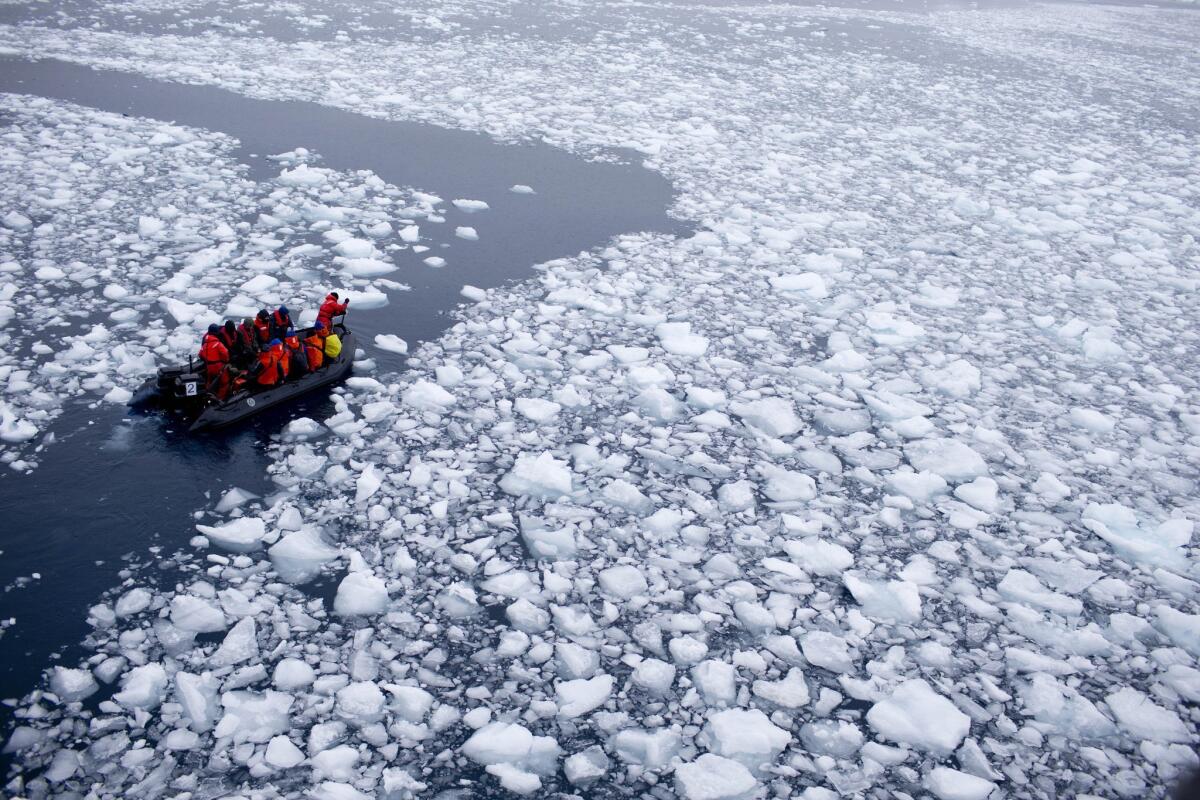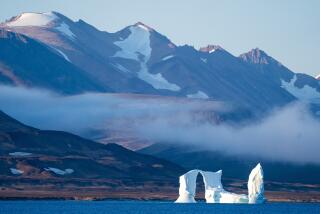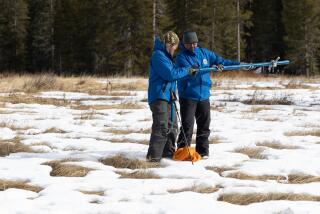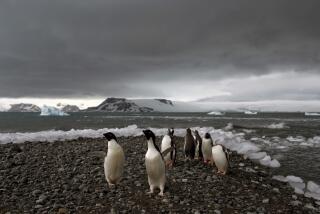Antarctic ice shelves melting 70% faster, study shows

- Share via
The frozen fringes of western Antarctica have been melting 70% faster in the last decade, raising concern that an important buttress keeping land-based ice sheets from flowing to the sea could collapse or vanish in coming decades, a new study shows.
An acceleration in the flow of massive ice sheets would add substantially to the ongoing rise of sea levels, according to Fernando Paolo, a geophysics PhD candidate at UC San Diego’s Scripps Institution of Oceanography and lead author of the study published online Thursday in the journal Science.
“They hold back the ice discharge from the ice sheet into the ocean,” Paolo said. “In the long term, that is the main concern from losing volume from an ice shelf.”
The study adds to growing concern that climate change has altered the equilibrium of growth and melt on a part of the continent holding an estimated 530,000 cubic miles of ice. That’s enough ice to raise the sea level by 11 feet, by some estimates.
“If the rate of change that we have observed remains the same, then we should expect a larger contribution of the ice sheet to sea level rise,” Paolo said.
Shelves in the Bellingshausen and Amundsen seas had the most rapid thinning, losing an average of 24 to 63 feet per decade, according to the study, which analyzed satellite-based radar data from 1994-2012.
The most dramatic loss occurred on the Venable ice shelf on the Bellingshausen Sea, which thinned by an average of 118 feet per decade, according to the study. At that rate, it could disappear in 100 years. The same fate could befall the Crosson shelf on the Amundsen Sea, the study found.
Those rates are conservative “lower bound” estimates, said Paolo.
On the eastern side of Antarctica, previous ice sheet growth has ground to a halt over the last decade, the study showed.
The mechanics behind the changes in the east and west of Antarctica, however, are different, largely because the geology of each is distinct.
Glaciers form from the long-term accumulation of snowfall that compresses and flows slowly downhill toward the sea. In the east, these ice masses are predominantly anchored to land, so growth and decline are driven largely by changes in snowfall. Those glaciers nonetheless have tongue-like extensions floating on the sea, and studies have shown these shelves are thinning as rapidly as those in the west.
In the west, most of the ice sheet already is marine, and “grounded” to the continent below sea level. Warmer waters coming into contact with that boundary, or grounding line, are thinning it from the bottom, causing more of the sheet to become buoyant. That effectively causes this grounding line to migrate inward, potentially for many miles.
Such a retreat is particularly dangerous in the many areas of western Antarctica where ice sheets lie on a retrograde bed - where the inland slope is downward. The retreat of the grounding line in those areas could trigger runaway acceleration of land glaciers, according to the study.
“After we pass that tipping point, the ice sheet just keeps flowing” regardless of the ocean water’s influence, Paolo said.
The forces driving both trends point toward altered wind patterns over Antarctica that bring less precipitation to east Antarctica and warmer water to the contenent’s ice shelves. That, in turn, is likely caused by long-term changes in climate linked to the warming effect of increased carbon building up in Earth’s atmosphere, Paolo said.
By clustering the data in three-month snapshots over 18-mile swaths, the researchers were able to offer a high-resolution view of many individual shelves and differentiate short-term, local fluctuations from longer climate-related trends. Several earlier studies of ice sheets looked at shorter intervals over much broader regions, the authors noted.
The more detailed mosaic presented by the new study nonetheless offered little to surprise Eric Rignot, a glaciologist at UC Irvine and NASA’s Jet Propulsion Laboratory in La Cañada-Flintridge.
His research, which analyzed 40 years of data, suggests that many glaciers already have reached a point of no return.
“It does emphasize that a number if ice shelves are not healthy, which is bad news for the glaciers that flow into them because the glaciers will start flowing faster and raise sea level faster,” Rignot said.
Warming up to science? Follow me on Twitter: @LATsciguy







